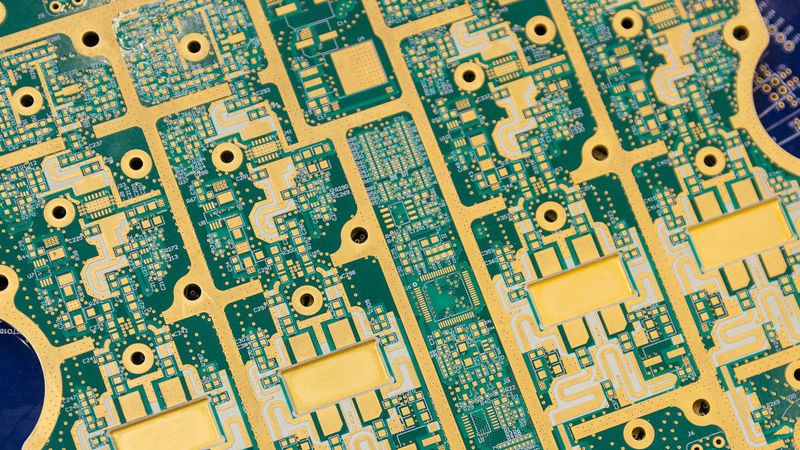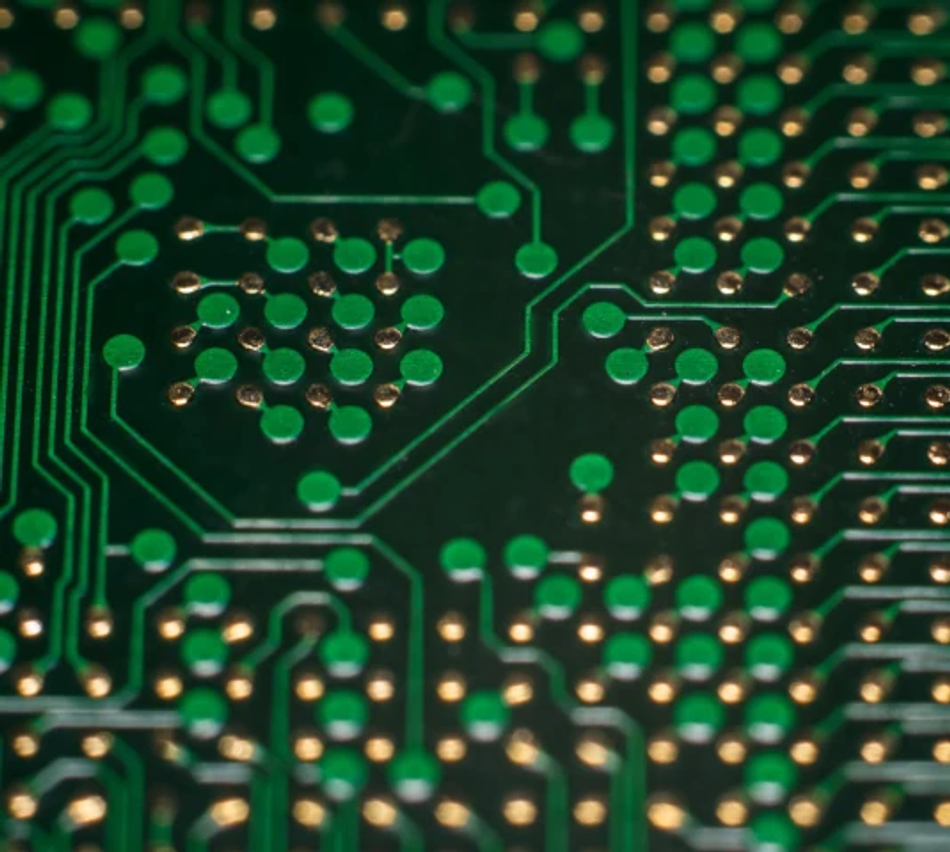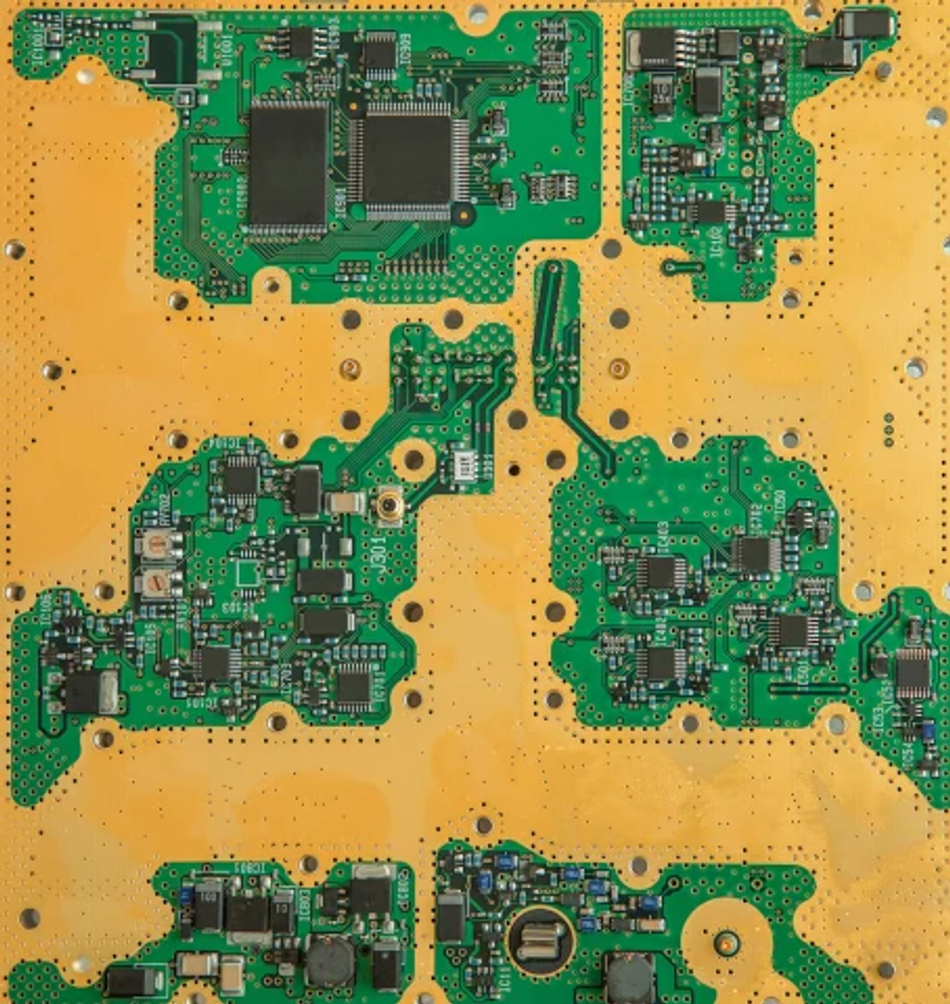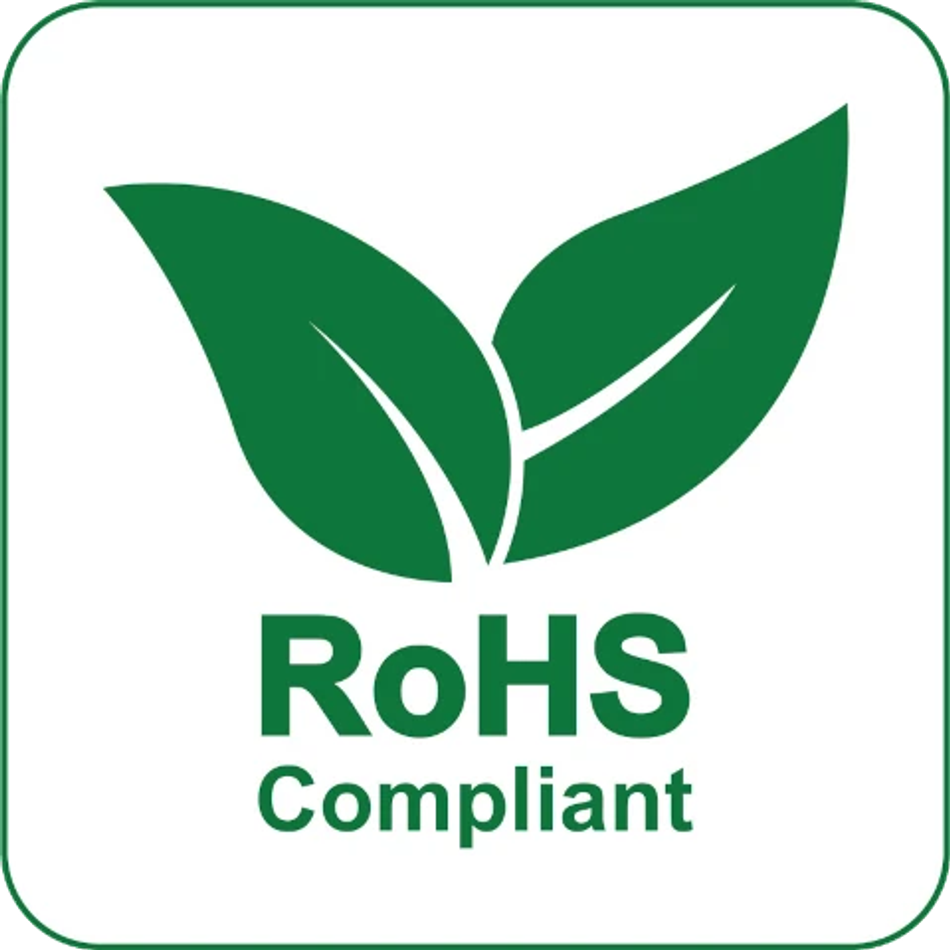FAB Insights: ENIG vs ENEPIG
A short primer on how to choose PCBA surface finishes

Enig vs ENEPIG
This article was first published on
macrofab.comFAB Insights: ENIG vs. ENEPIG
How to choose PCBA surface finishes
Let’s review ENIG vs. ENEPIG in a side-by-side comparison to identify the best option for your PCBA projects. This blog will discuss the differences, advantages, and limitations of each.
ENIG (electroless nickel immersion gold) and ENEPIG (electroless nickel electroless palladium immersion gold) represent two of the main surface finish options to consider for your PCBA project. Surface finishes can stop copper pads from oxidizing, providing excellent component solderability to guarantee the best electrical performance.
Working with a contract manufacturer (CM) such as MacroFab during your development process will help you identify the pros and cons of each method.
What is ENIG?

ENIG has been a popular PCB surface finish for several decades due to its flat planar surface. This has been required for assembly due to the rise of tight pitch BGA devices and other small surface-mount form factors. The process can also handle many solder reflow cycles with an extra benefit of a long shelf-life time.
However, historical manufacturing challenges with some ENIG suppliers have caused nickel corrosion to form the “Black Pad” effect. This has been a leading weakness related to the ENIG surface finish, although a controllable one when proper measures are taken.
This “Black Pad” occurs when the nickel applied beneath the gold plating corrodes and resembles a black surface. This corrosion can lead to poor component solderability and a solder pad that loses connectivity to the component pad.

The ENIG surface finish can be challenging to produce for some PCB manufacturers. When examining the final product, the gold application step can cover the final surface area which can obscure issues that cause “Black Pad”. The leading root cause analysis of this defect is that it is likely contamination of the Nickel which migrates into Gold and turns it a black color.
Your CM can rule out such issues through proper inspection; if no spikes or dark bands occur near nickel boundaries, a black pad is unlikely to occur. Additionally, a well-controlled nickel bath can minimize or eliminate the defect. Finally, working with a CM like MacroFab with a one-year workmanship guarantee provides extra peace of mind.
Advantages of ENIG
An ENIG finish provides many advantages, including:
- Surface flatness for fine-pitch BGA devices and other small form factor components.
- Excellent for in-circuit electrical test points and connectors with press-fit insertion posts.
- Support for wire bonding and edge card connections.
- Lower relative cost compared to ENEPIG finishes.
Limitations of ENIG
- Potential for “Black Pads” if the nickel and gold processing are not well controlled
- The PCB plating can be affected by the thickness of electroless nickel and gold
- A relatively low wet factor
What is ENEPIG

One simple solution to the black pad potential issue is to use a similar alternative surface finish: ENEPIG (Electroless Nickel Electroless Palladium Immersion Gold). The ENEPIG finish solves this issue by depositing electroless palladium on top of the nickel layer. The palladium prevents any Nickel contamination from migrating to the gold. ENEPIG is suitable for PCBs using different packaging technologies soldered across the system board. ENEPIG can also satisfy a wide range of applications such as military, aerospace, and other high-performance devices within the medical industry that features high density and reliability.
While ENEPIG costs more than ENIG, it is still a cost-effective option that deposits thin layers of gold and palladium for additional durability and excellent solderability. Additionally, ENEPIG’s low contact resistance prevents energy losses, overheating, and poor grounding.
Advantages of ENEPIG
- Palladium mitigates the “Black Pad” quality issue seen with some CMs in the ENIG process
- Preferred for good solderability and many solder reflow cycles
- Highly reliable for wire bonding capability
- Satisfies the broad requirements of miniaturization, PCB thinness, and dense vias.
Limitations of ENEPIG
- Relatively higher cost than ENIG may not be economically suitable for all applications
- Reduced SMT Solder performance due to a thicker layer from palladium
- Longer duration to wet
Conclusion
ENIG and ENEPIG surface finishes offer excellent PCB planarity for systems that require tight pitch components. While “Black Pad” issues may have plagued ENIG suppliers in the past, MacroFab has solved this quality challenge and can offer either finish without concern for quality. ENEPIG offers a more robust palladium application, it can also provide a higher reliability process for more demanding environmental applications.

When considering which surface finish to use, the following technical questions should be answered by working with MacroFab. These questions will have a role in influencing the selection of your optimal PCB surface finish for your project:
- Is lead-free solder, or Reduction of Hazardous Substances (RoHS), a requirement of your PCB design?
- What component form factor types and pin pitch will be used within the PCB?
- Will the PCB have wire-bonded components or will they all be mounted using wave solder?
- To what environmental issues (temperature, humidity, and handling) will the final product be exposed?
While ENIG and ENEPIG are two of the more popular surface finish options, MacroFab also offers EHG and LF-HASL (lead-free Hot Air Solder Leveling) as PCB surface finish options. LF-HASL may be an alternative for those systems that do not have fine-pitch device pins.